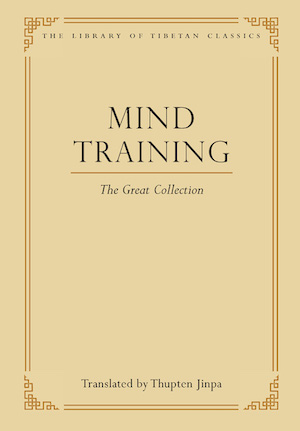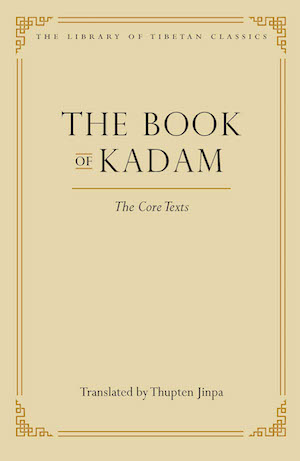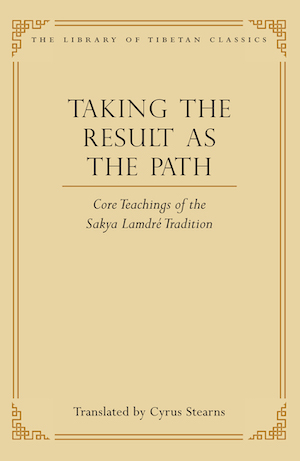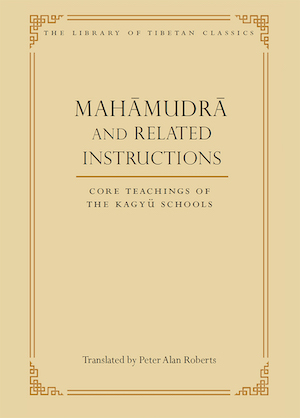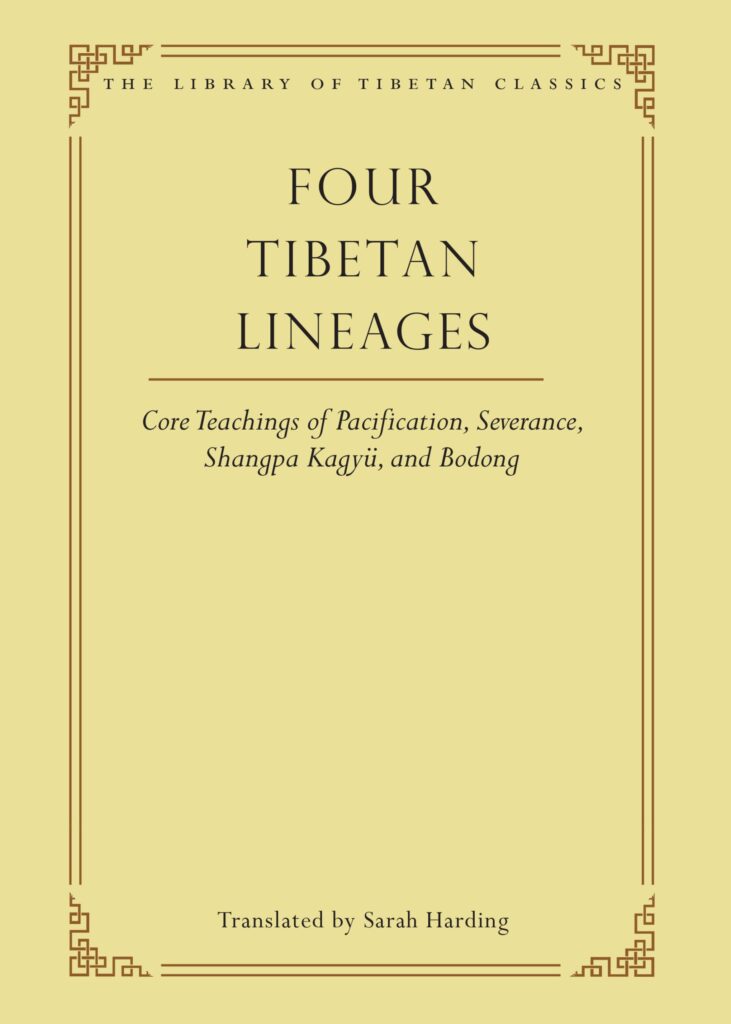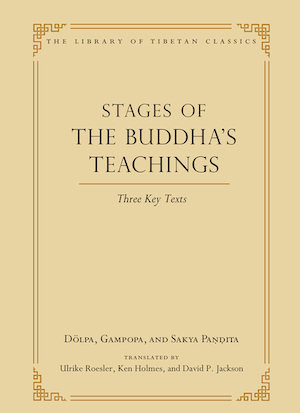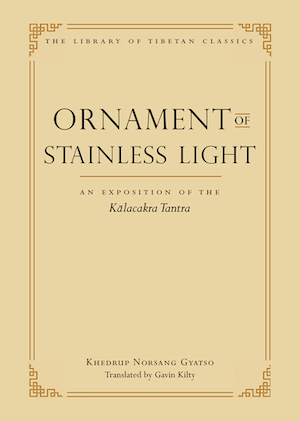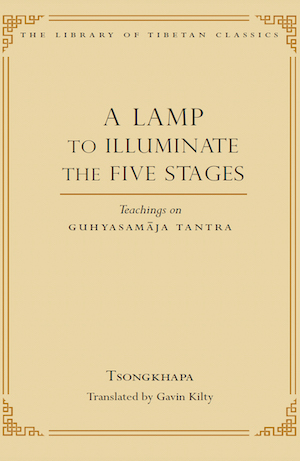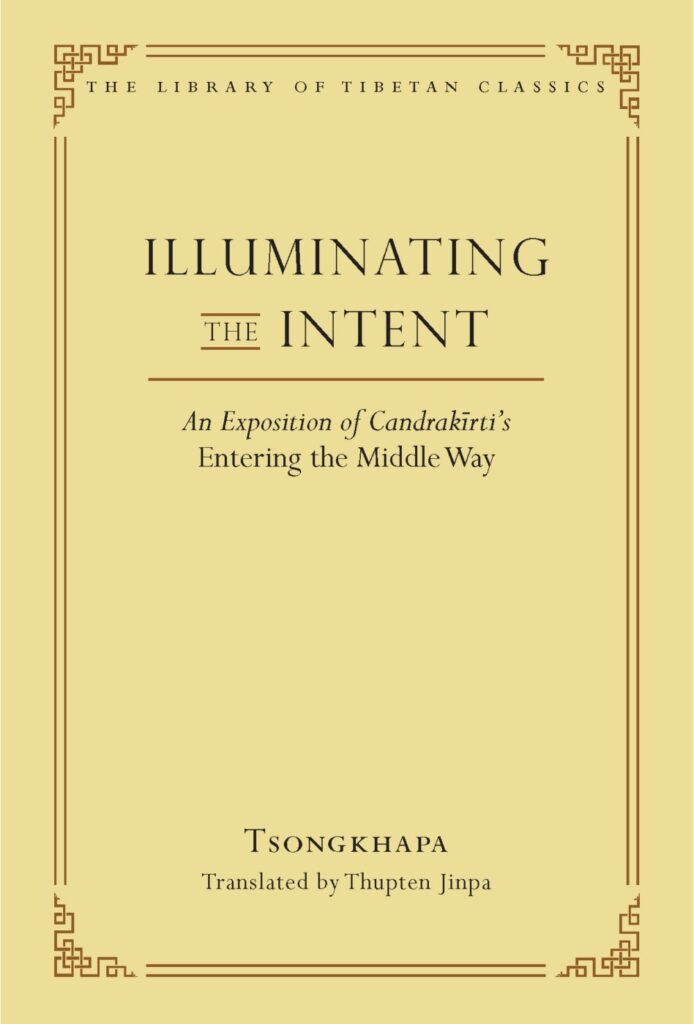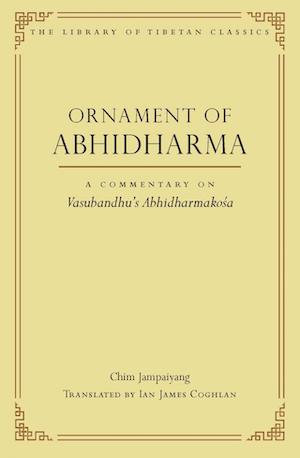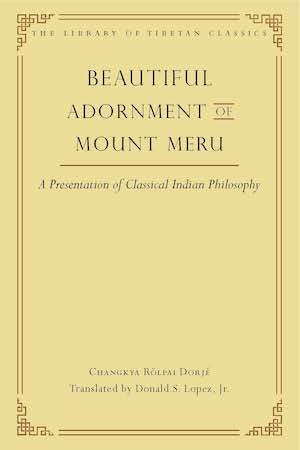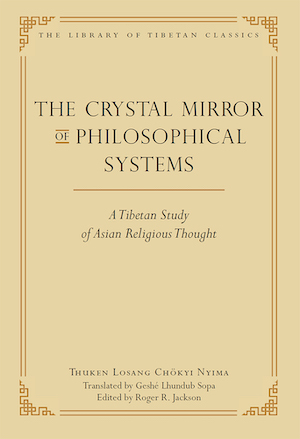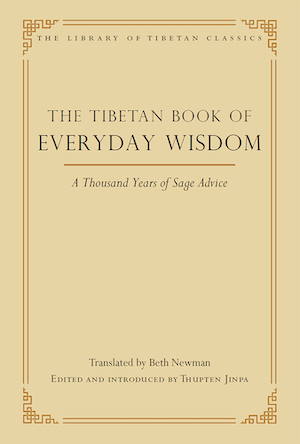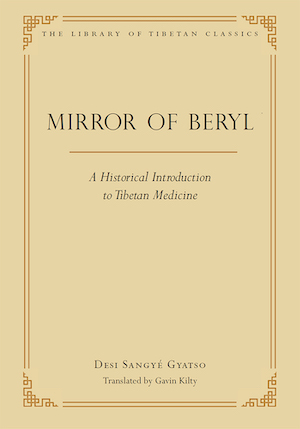
Library of Tibetan Classics (LoTC)
The volumes are organized thematically and cover the broad categories of classical Tibetan knowledge, from specific teachings of the Tibetan schools, to philosophy, psychology and ethics, to treatises on the arts, social responsibilities, science, history, and Tibetan opera. A complete catalog is now available online and can be viewed here.
Each translated volume of THE LIBRARY OF TIBETAN CLASSICS is accompanied by an introductory essay, annotation, and a glossary to help provide the modern reader a contemporary context to the texts. The English text of the Classics series is clear, accurate and reader-friendly. While maintaining a high standard of accuracy, the main body of the text will be largely free of scholarly apparatus so that the actual text flows naturally.
To help specialists and students of classical Tibetan who wish to compare the translations against their original Tibetan, direct page references the original Tibetan texts are provided in the main body of the English volume. To download pdf of the original Tibetan texts, click here.
THE LIBRARY OF TIBETAN CLASSICS will make available to libraries, educational and cultural institutions, and interested individuals throughout the world, a comprehensive reference library of key classical Tibetan texts, covering the entire gamut of classical Tibetan knowledge, within a manageable collection.
1. MIND TRAINING: The Great Collection
Compiled by Shönu Gyalchok and Könchok Gyaltsen (fifteenth century)
Translated by Thupten Jinpa
2. THE BOOK OF KADAM: The Core Texts
Attributed by Atisha and Dromtönpa (eleventh century)
Translated by Thupten Jinpa
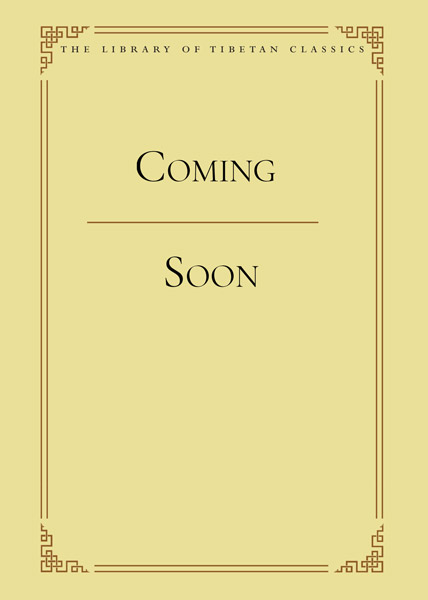
3. THE GREAT CHARIOT: A Treatise on the Great Perfection
Longchen Rapjampa (1308–1363)
Translator: Ives Waldo; editor, Constance Miller
IN PROGRESS
4. TAKING RESULT AS THE PATH: Core Teachings of the Sakya Lamdré Tradition
Authors:
Jamyang Khyentse Wangchuk (1524–1568)
The Fifth Dalai Lama (1617 – 1682)
Sachen Kunga Nyingpo (1092 – 1158)
Translated by Cyrus Stearns
5. MAHAMUDRA AND RELATED INSTRUCTIONS: Core Teachings of the Kagyü School
Translated by Peter Alan Roberts

6. STAGES OF THE PATH AND THE EAR-WHISPERED INSTRUCTIONS: Core Teachings of the Geluk School
Translators: Thupten Jinpa, Geshe Lhakdor Lobsang Jordan
IN PROGRESS

7. OCEAN OF DEFINITIVE MEANING: A Teaching for the Mountain Hermit
Dölpopa Sherap Gyaltsen (1292–1361)
Translator: Cyrus Stearns
IN PROGRESS
8. FOUR TIBETAN LINEAGES: Core Teachings of Pacification, Severance, Shangpa Kagyü, and Bodong
Jamgön Kongtrül (1813–90)
Translator: Sarah Harding

9. SUTRA, TANTRA AND THE MIND CYCLE: Core Teachings of the Bön School
10. STAGES OF THE BUDDHA’S TEACHINGS: Three Key Texts
Translators: David Jackson, Ken Holmes and Ulrike Roesler

11. THE BODHISATTVA’S ALTRUISTIC IDEAL: Selected Key Texts
Translator: Thupten Jinpa

12. ETHICS OF THE THREE VOWS: Selected Key Texts
Translators: Geshe Damdul Namgyal, Robert Warren Clark
IN PROGRESS

13. SADHANAS: Vajrayana Buddhist Meditation Manuals
Translators: Thupten Jinpa, Thomas Troughton
IN PROGRESS
14. ORNAMENT OF STAINLESS LIGHT: An Exposition of the Kalacakra Tantra
Khedrup Norsang Gyatso (1423–1513)
Translated by Gavin Kilty
15. A LAMP TO ILLUMINATE THE FIVE STAGES: An Extensive Presentation of the Completion Stage of Highest Yoga Tantra
Tsongkhapa (1357–1419)
Translator: Gavin Kilty

16. STUDIES IN THE PERFECTION OF WISDOM SUTRAS: Three Key Texts
Translator: Gareth Sparham
IN PROGRESS

17. TREATISES ON THE BUDDHA NATURE: Selected Key Texts
Translator: John Whitney Pettit
IN PROGRESS

18. DIFFERENTIATION OF THE PROFOUND VIEW: Interpretations of the Philosophy of Emptiness in Tibet
Translator: Guy Martin Newland
IN PROGRESS
19. ILLUMINATING THE INTENT: An Exposition of Candrakirti’s “Entering the Middle Way”
Tsongkhapa (1357–1419)
Translator: Thupten Jinpa

20. TIBETAN BUDDHIST EPISTEMOLOGY I: The Sakya School
Translator: Matthew Kapstein

21. TIBETAN BUDDHIST EPISTEMOLOGY II: The Geluk School
Translator: Sherab Gyatso
IN PROGRESS

22. TIBETAN BUDDHIST PSYCHOLOGY AND PHENOMENOLOGY: Selected Texts
Translator: Ian Coglan
IN PROGRESS
23. ORNAMENT OF ABHIDHARMA: A Commentary on Vasubandhu’s Abhidharmakosa
Chim Jampalyang (thirteenth century)
Translator: Ian Coglan
24. A BEAUTIFUL ADORNMENT OF MOUNT MERU: Presentation of Classical Indian Philosophies
Changkya Rölpai Dorjé (1717–86)
Translator: Donald S Lopez, J
25. CRYSTAL MIRROR OF PHILOSOPHICAL SYSTEMS: A Tibetan Study of Asian Religions Thought
Thuken Losang Chökyi Nyima (1737–1802)
Translator: Géshe Lhundub Sopa

26. SONGS OF SPIRITUAL EXPERIENCE AND ADVICE: Selected Poems and Verse
27. THE TIBETAN BOOK OF EVERYDAY WISDOM: A Thousand Years of Sage Advice
Translator: Elizabeth Newman
28. MIRROR OF BERYL: A Historical Introduction to Tibetan Medical Science
Desi Sangyé Gyatso (1653–1705)
Translated by Gavin Kilty

29.TIBETAN ASTROSCIENCES: Selected Texts on Tibetan Astronomy and Astrology
Translator: Gavin Kilty
IN PROGRESS

30. GRAMMAR, LINGUISTICS, AND POETICS: Selected Texts on Tibetan Art and Literature
Translator: Phillipe Turenne
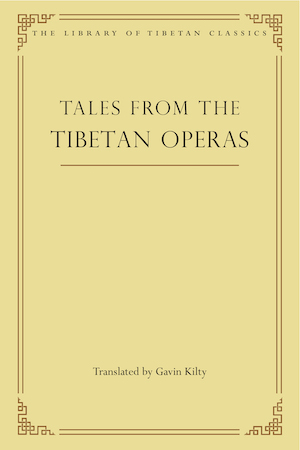
31. TALES FROM THE TIBETAN OPERAS
Translator: Gavin Kilty

32. HISTORY OF THE DHARMA IN INDIA AND TIBET
Khepa Deu (Twelfth century)
Translator: Dan Martin
IN PROGRESS
OTHER TEXTS TRANSLATED BY THUPTEN JINPA
- SIXTY STANZAS OF REASONING by Nagarjuna
- HYMN TO [THE BUDDHA], THE WORLD TRANSCENDENT by Nagarjuna
- COMMENTARY ON THE AWAKENING MIND by Nagarjuna
- A GARLAND OF VIEWS Attributed to Padmasambhava
- THREE PRINCIPAL ASPECTS OF THE PATH by Je Tsongkhapa
- IN PRAISE OF DEPENDENT ORIGINATION by Je Tsongkhapa
- SONGS OF EXPERIENCE ON THE STAGES OF THE PATH by Je Tsongkhapa
- ROOT LINES ON CLASSICAL INDIAN PHILOSOPHIES by Jamyang Shepa
- RECOGNIZING MY MOTHER: A SONG ON THE VIEW OF EMPTINESS Cankya Rolpai Dorje
- A SONG ON THE VIEW OPENING THE EYES TO SUCHNESS by Gungthang Tenpai Dronmé
- PRAYER FOR THE LONG LIFE OF HIS HOLINESS THE DALAI LAMA
SELECTED INDIAN BUDDHIST CLASSICS SERIES
Download Tibetan texts for the Indian Buddhist Classics Series here.
OTHER TIBETAN TEXTS
བརྡ་སྤྲོད་གསར་བསྒྲིགས་སྨྲ་སྒོའི་ལྡེ་མིག། (འཕྲུལ་དེབ་ཕབ་ལེན།)
Brda sprod gsar bsgrigs smra sgo’i lde mig (Modern Tibetan Grammar: A Key Opening the Gateway of Speech), Institute of Tibetan Classics, 2010.
After years of critical reflection and research, the Institute of Tibetan Classics published the result of this study as Brda sprod gsar bsgrigs smra sgo’i lde mig (Modern Tibetan Grammar: A Key Opening the Gateway of Speech), Institute of Tibetan Classics, 2010. The book is aimed primarily at Tibetan teachers to help them appreciate classical Tibetan within a new perspective so that they could adapt their teaching methods. The book could be used also as a primer on Tibetan grammar by students from high school onwards (i.e. from the ninth grade). The pdf of the entire book can be downloaded free here.
